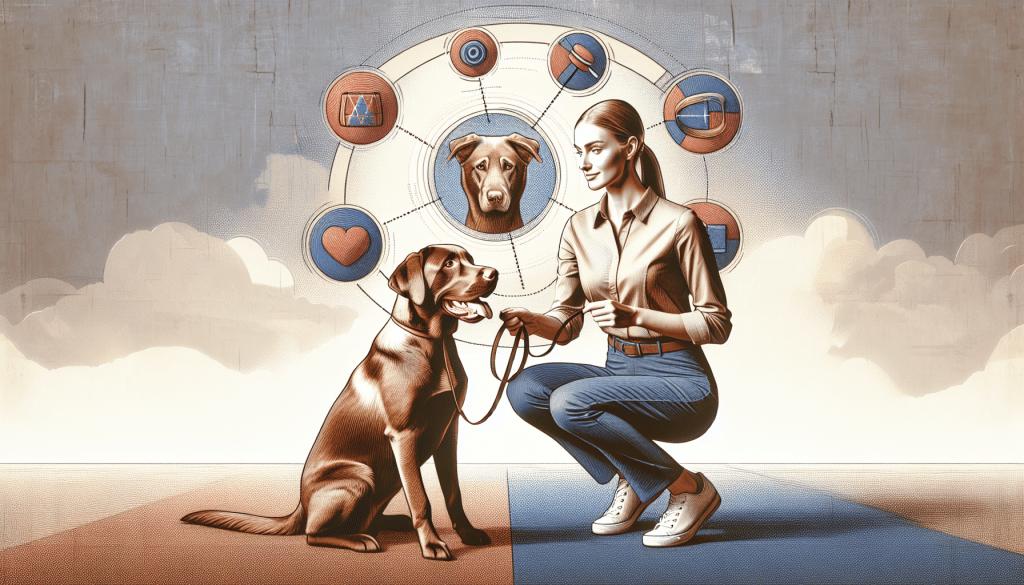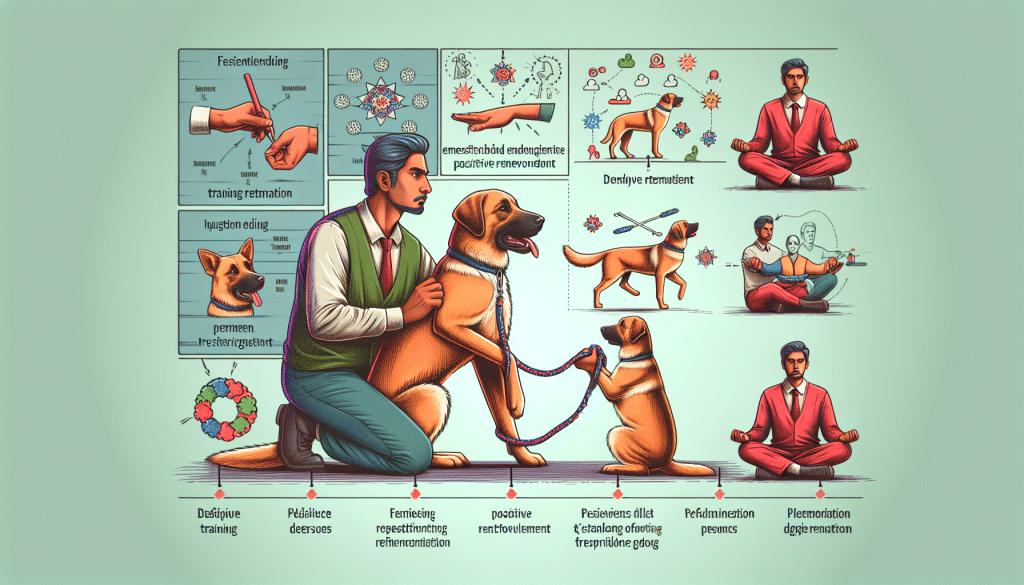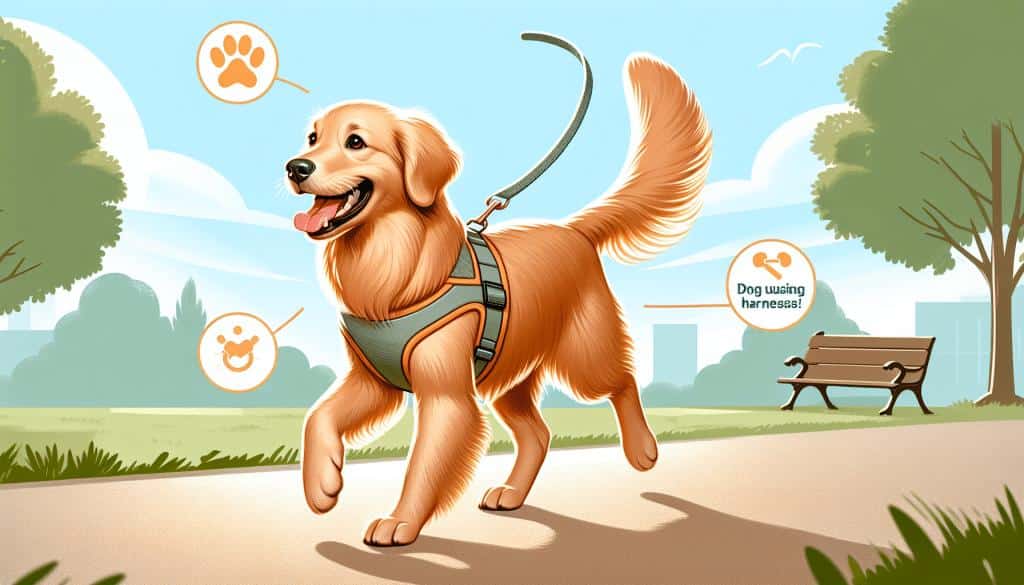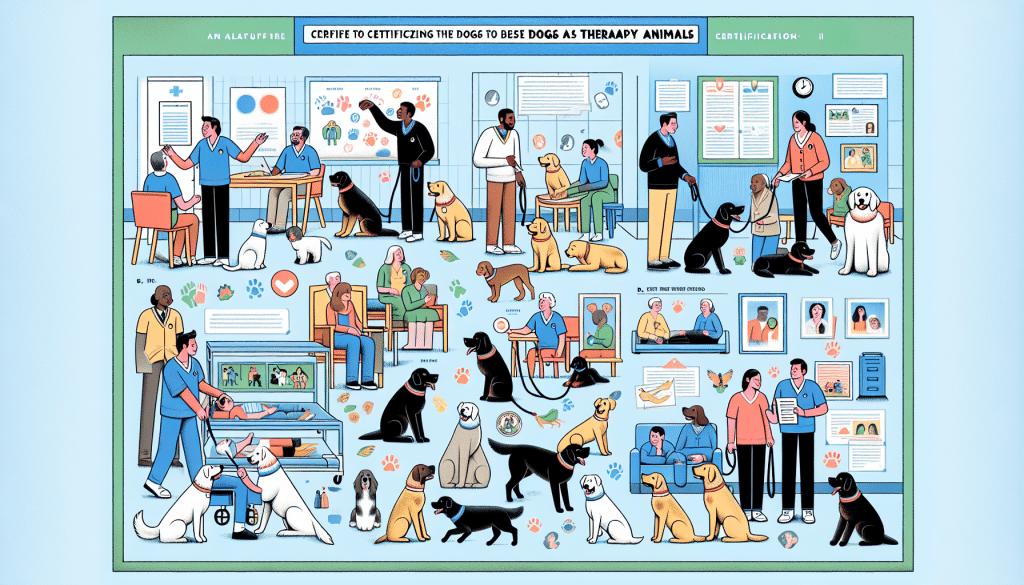Imagine a world where you and your furry best friend are in perfect harmony, where every command you give is met with unwavering obedience, and where your bond grows stronger through each training session. In this article, we delve into the realm of effective dog training techniques, exploring techniques that are gentle, yet firm, and that prioritize positive reinforcement to bring out the best in your canine companion. From teaching basic commands to addressing behavior issues, this guide offers a compassionate and empathic approach to help you create a well-behaved and happy pup for a lifetime of joyful memories.

Understanding Dog Behavior
The role of breed characteristics
Understanding dog behavior is essential for establishing a strong bond with your furry friend. One key aspect to consider is the influence of breed characteristics on their behavior. Different breeds have different instincts and predispositions, which can greatly impact their behavior and temperament. For instance, herding breeds such as Border Collies may have a strong instinct to chase and control movement, while hunting breeds like Retrievers may have a strong prey drive. By understanding these breed-specific traits, you can better anticipate your dog’s needs and behaviors.
Importance of socialization
Socialization plays a crucial role in shaping your dog’s behavior and ensuring they become well-adjusted and confident members of society. Exposing your dog to various environments, people, and other animals from an early age helps them develop positive associations and reduces the likelihood of fear or aggression. It is important to remember that socialization is an ongoing process, not something that happens just during the puppy stage. By continually exposing your dog to new experiences, you can promote their social skills and increase their tolerance for different situations throughout their lives.
Interpreting body language and cues
Dogs communicate primarily through body language, and being able to interpret their signals is paramount in understanding their behavior and emotions. By paying attention to your dog’s body posture, facial expressions, and tail position, you can gain valuable insights into their emotional state, needs, and intentions. For example, a lowered head and tucked tail may indicate fear or submission, while a wagging tail held high can signal excitement. By understanding your dog’s body language, you can better respond to their needs and provide appropriate support and guidance.
Essential Training Principles
Consistency in commands and routines
Consistency is key when it comes to dog training. Dogs thrive on a predictable routine and clear communication. When giving commands, use the same cues and gestures, and ensure that all family members are on the same page. Consistency also extends to daily routines, such as feeding times and exercise schedules. By maintaining consistency, you provide your dog with a sense of structure and stability, making it easier for them to understand and comply with your expectations.
Positive reinforcement
Positive reinforcement is a highly effective and ethical training technique that involves rewarding desired behaviors. When your dog exhibits the desired behavior, such as sitting or staying, promptly reward them with praise, treats, or a favorite toy. This positive association helps reinforce the behavior and encourages them to repeat it in the future. Positive reinforcement not only strengthens the bond between you and your dog but also creates a positive learning experience, making training enjoyable for both of you.
Timing of rewards and corrections
Timing is crucial when it comes to training. Rewards should be given immediately after your dog performs the desired behavior to ensure they make the connection between the behavior and the reward. Similarly, if a correction is necessary, it should be done at the moment of the undesired behavior. Dogs live in the present moment and may not understand delayed consequences. By providing immediate feedback, you help your dog understand what is expected of them and increase the effectiveness of your training sessions.
Importance of patience and persistence
Training a dog takes time, patience, and persistence. Every dog is unique, and learning new behaviors can be challenging for them. It is important to approach training with a calm and patient mindset, understanding that progress may be gradual. Celebrate small victories and be consistent in your training efforts. Dogs thrive on repetition and consistency, so by persistently practicing and reinforcing desired behaviors, you set your dog up for success in the long run.

Puppy Training Basics
House training schedules
House training is one of the first and most important aspects of puppy training. Establishing a consistent schedule for bathroom breaks helps your puppy understand where and when they should eliminate. Take your puppy outside to their designated potty area regularly, especially after meals, playtime, and naps. Be patient and praise them when they eliminate in the correct spot, reinforcing the desired behavior.
Crate training as a tool
Crate training can be a valuable tool in puppy training. Dogs have a natural instinct to seek out small, den-like spaces, and a crate can provide them with a sense of security and a designated safe space. When introducing your puppy to a crate, make it a positive experience by associating it with treats, toys, and comfortable bedding. Gradually increase the amount of time your puppy spends in the crate, always ensuring they have enough exercise, mental stimulation, and frequent bathroom breaks.
Introduction to basic commands: Sit, Stay, Come
Teaching your puppy basic commands lays the foundation for good obedience and communication. Start with simple commands like “sit,” “stay,” and “come.” Use positive reinforcement techniques such as treats or praise to encourage your puppy to perform the desired behavior. Break the commands down into smaller steps, rewarding your puppy for incremental progress. Be patient and consistent, practicing these commands in various environments and gradually increasing distractions.
Clicker Training
What is clicker training?
Clicker training is a popular and effective method of dog training that involves using a small handheld device called a clicker to mark desired behaviors. The clicker produces a distinct sound that signals to your dog that they have done something correctly. This sound is then followed by a reward, such as treats or praise. The clicker serves as a precise and consistent marker, helping your dog understand which behaviors are being reinforced.
Associating the click with positive reinforcement
To associate the clicker with positive reinforcement, you will need to follow a simple process called charging the clicker. Start by clicking the device and immediately giving your dog a treat. Repeat this several times, ensuring your dog makes the connection between the sound of the click and the reward. Once your dog recognizes that the click means a treat is coming, you can start using the clicker to mark desired behaviors during training sessions.
Gradually shaping behavior with clicker training
Clicker training allows for precise communication and can be used to shape complex behaviors. By breaking down desired behaviors into small achievable steps, you can click and reward your dog for each incremental progress. For example, if you want to teach your dog to roll over, you can start by rewarding them for lying down, then for rolling to one side, and eventually for completing the full roll. Clicker training encourages dogs to think and problem-solve, making it an effective tool for more advanced training.

Obedience Training
Advanced commands and their importance
Building on the foundation of basic commands, obedience training focuses on teaching more advanced commands such as “leave it,” “drop it,” or “heel.” These commands are essential for maintaining control and ensuring the safety of your dog in various situations. Advanced commands also help strengthen the bond between you and your dog, as they require a higher level of trust and cooperation.
Building on basic commands
Obedience training builds upon the basic commands mastered during puppy training. By gradually increasing the difficulty and distractions, you can reinforce your dog’s understanding and response to these basic commands. For example, practicing “sit” or “stay” in a busy park or with other dogs nearby helps your dog generalize the commands and respond reliably even in challenging environments.
Focusing on distance, duration, and distractions
As you progress in obedience training, it is important to gradually increase the difficulty level by introducing distance, duration, and distractions. For example, you can practice “stay” while gradually moving farther away or “heel” while passing by tempting distractions. This helps your dog learn to maintain focus and self-control, even when faced with more challenging circumstances.
Enrolling in obedience classes
Enrolling in obedience classes can be highly beneficial for both you and your dog. Professional trainers provide guidance, structure, and expert knowledge to ensure effective training. Obedience classes also offer opportunities for socialization with other dogs and people, further enhancing your dog’s training experience. Additionally, the structured environment of a class can help maintain consistency and accountability in your training regimen.
Leash Training
Getting your dog comfortable with a leash
Leash training is an important skill for every dog, as it ensures their safety and allows for more controlled walks. Start by introducing your dog to their leash in a positive and gradual manner. Allow them to sniff and explore the leash before attaching it to their collar or harness. Begin by walking around in a controlled environment, rewarding your dog for walking calmly beside you.
Preventing pulling: techniques and tools
Many dogs have a natural inclination to pull on the leash, which can make walks frustrating for both you and your furry friend. Some techniques to prevent pulling include using a front-clip harness or head halter, which redirect your dog’s forward momentum when they pull. Another approach is to stop walking whenever your dog pulls, only resuming when they have returned to your side. Consistency and rewarding desired behavior are key in teaching your dog to walk politely on a leash.
Heel command and its significance
The “heel” command is a more advanced skill that teaches your dog to walk beside you with a loose leash. It is particularly useful in situations where you need your dog to walk calmly and attentively, such as crowded areas or when passing other dogs. Teaching the “heel” command involves rewarding your dog for maintaining a specific position next to your leg while walking. This command requires practice and consistency to achieve, but once mastered, it can greatly improve your walks together.
Socialization Skills
Benefits of socializing your dog
Socialization is crucial for your dog’s overall well-being and can prevent behavior problems later in life. By exposing your dog to a variety of people, animals, noises, and environments, you help them become more confident, adaptable, and less fearful or aggressive. Socialization also promotes positive interactions and improves communication skills, both with humans and other animals. Well-socialized dogs are generally happier and easier to handle in various situations.
Introducing your dog to new people and pets
When introducing your dog to new people or pets, it is important to do so in a positive and controlled manner. Allow your dog to approach at their own pace, and provide rewards and praise for calm and friendly behavior. Supervision and ensuring the encounter remains positive are key factors in successful introductions. Gradually increase the complexity and variety of social interactions while always prioritizing your dog’s safety and comfort.
Socialization at different life stages
Socialization should begin as early as possible in your dog’s life, ideally during the critical period between 3 and 14 weeks of age. During this time, puppies are more open to new experiences and tend to form lasting impressions. However, socialization should continue throughout their lives. Adolescence and adulthood bring new challenges, and continued exposure to different environments, people, and animals helps maintain their social skills and adaptability.
Problem Behavior Management
Identifying and addressing aggression
Aggression is a serious problem behavior that can pose a risk to both humans and other animals. Identifying and addressing the underlying causes of aggression is crucial for managing and modifying this behavior. It is essential to consult with a professional dog trainer or behaviorist who can help assess the situation and tailor a behavior modification plan specifically for your dog. Depending on the severity and nature of the aggression, management strategies, training techniques, and potentially medication may be recommended.
Dealing with excessive barking
Barking is a natural form of communication for dogs, but excessive barking can be disruptive and problematic. Understanding the reasons behind your dog’s barking is the first step in addressing this issue. Common triggers include boredom, anxiety, territoriality, or simply seeking attention. By identifying the cause, you can implement appropriate strategies such as providing mental stimulation, increasing exercise, using positive reinforcement to teach quiet commands, or utilizing anti-bark devices. Consistency and patience are crucial when working to reduce excessive barking.
Managing separation anxiety
Separation anxiety is a common problem among dogs and can manifest in destructive behavior, excessive barking, and even self-harming actions. Coping with separation anxiety requires a comprehensive approach that includes gradual desensitization to being alone, counter-conditioning techniques, and creating a safe and comfortable environment. It may be beneficial to consult with a professional dog trainer or behaviorist to develop a personalized plan tailored to your dog’s specific needs. Patience, consistency, and understanding are key to effectively manage separation anxiety.
Approaches to curb destructive behaviors
Destructive behaviors, such as chewing furniture or digging, can be frustrating for dog owners. However, it is important to understand that these behaviors often arise from unmet physical or mental needs. To address destructive behaviors, provide appropriate outlets for your dog’s energy through regular exercise, mental stimulation, and interactive toys. Set your dog up for success by managing their environment to prevent access to tempting items. Teaching and reinforcing alternative, acceptable behaviors, such as appropriate chewing or digging, helps redirect their natural instincts.
Agility Training
Introduction to dog agility
Agility training is a fun and challenging activity that involves navigating a course of obstacles, such as jumps, tunnels, weave poles, and A-frames. It not only provides physical exercise but also stimulates your dog’s mental capabilities and strengthens the bond between you. Training for agility involves teaching your dog to navigate the various obstacles using cues and commands, as well as building their physical fitness and coordination.
Training for different agility equipment
Each agility obstacle requires specific training techniques to ensure your dog’s safety and success. For jumps, start with low heights and gradually increase as your dog gains confidence and skill. Teaching your dog to navigate tunnels involves gradual desensitization and positive reinforcement. The weave poles require patient training, introducing your dog to the concept of weaving in and out of the poles while gradually increasing difficulty. Proper teaching methods and conditioning are essential to ensure your dog learns to navigate each piece of agility equipment effectively.
Mental and physical benefits of agility training
Agility training offers numerous benefits for both you and your dog. Mentally, it provides your dog with mental stimulation and problem-solving opportunities, as they learn to navigate the course following your cues. Physically, agility training improves your dog’s fitness, strength, and coordination. It can also help prevent obesity and provide an outlet for their energy. Additionally, participating in agility competitions or demonstrations allows you to showcase your dog’s skills and enjoy a rewarding and engaging activity together.
Preventing Training Mistakes
Avoiding common training pitfalls
Training a dog can be challenging, and it is important to be aware of common mistakes to avoid. One common pitfall is inconsistency in commands and expectations. Remember to use the same cues and gestures consistently, as well as rewarding and correcting behaviors in a timely manner. Overlooking the importance of mental stimulation can also hinder progress, as dogs need both physical and mental exercise. Avoid punishment-based training methods, as they can lead to fear and anxiety. Instead, focus on positive reinforcement and reward-based techniques that promote a positive learning experience.
Correcting mistakes in training techniques
If you realize that you have made a mistake in your training techniques, it is important to make adjustments promptly. Assess what may have gone wrong and identify alternative approaches to address the issue. Seek guidance from professional trainers or behaviorists who can provide advice and correct any misconceptions. Stay patient and persistent, as dogs are adaptable and capable of learning new behaviors with the right guidance.
Knowing when to take a step back in training progression
It is important to recognize when your dog may be struggling or feeling overwhelmed during training. If your dog becomes frustrated, stressed, or disengaged, it may be necessary to take a step back in the training progression and reassess the approach. Return to simpler exercises or reduce the level of difficulty or distractions temporarily. By allowing your dog to regain confidence and build a solid foundation, you can set them up for success in their training journey.
In conclusion, understanding dog behavior is essential for effective training. By considering breed characteristics, focusing on socialization, and interpreting body language, you can enhance your communication and strengthen the bond with your dog. Effective training principles, including consistency, positive reinforcement, and patience, are key to successful training. From puppy training basics to advanced obedience commands, leash training, and socialization skills, a comprehensive training plan should be tailored to meet your dog’s specific needs. Managing problem behaviors through proper identification and appropriate strategies is crucial, while agility training provides mental and physical stimulation. By avoiding common training mistakes and being aware of the need for adjustments and progression, you can ensure a positive and successful training journey with your beloved canine companion.



